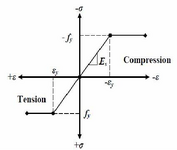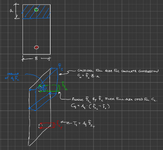Hi,
I am little confused with values of the strains in the compression rebars in doubly reinforced beam. Is there any limit on the strain of the rebars. Should the stress be within yield stress or it may exceed yield stress values. If the stress in rebars exceed the yield strength, then the strain may be higher than 0.003 limit for top compression fiber of concrete. please guide me on this.
Thanks.
I am little confused with values of the strains in the compression rebars in doubly reinforced beam. Is there any limit on the strain of the rebars. Should the stress be within yield stress or it may exceed yield stress values. If the stress in rebars exceed the yield strength, then the strain may be higher than 0.003 limit for top compression fiber of concrete. please guide me on this.
Thanks.


